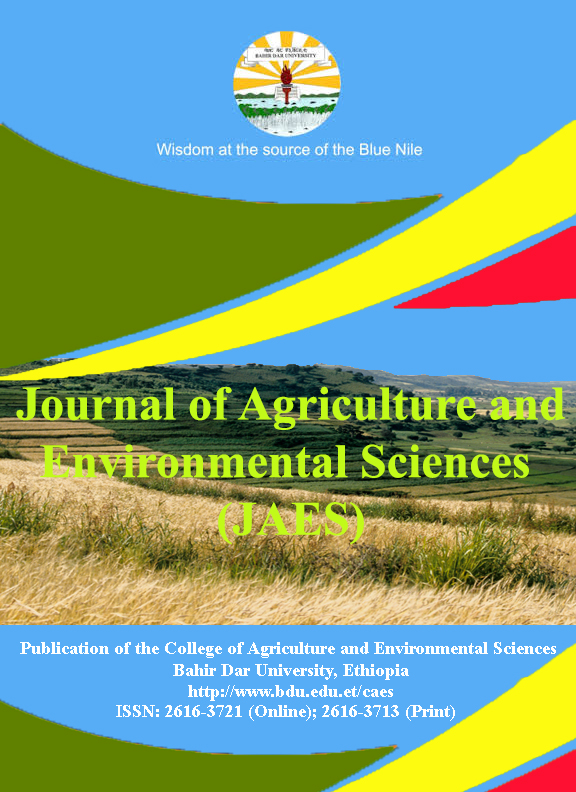Application of Multivariate Analysis for the Differentiation of Indigenous Goat Populations of South Gondar, Ethiopia
Keywords:
Indigenous goats, Morphometric traits, Multivariate analysis, South Gondar
Abstract
The study was carried out to describe the indigenous goat population structure in selected districts (Fogera, Farta and Libokemkem) of South Gondar zone by applying multivariate analysis on morphometricvar iables. Fourteen morphometric traits were taken from 153 male and 357 female goats. The results indicated that the district had a significant effect on all traits of male goats except for body length (BL), height at wither (HW), height at rump (HR), ear length (EL) and scrotal circumference. The district effect in females was also significant for BL, heart girth (HG) and chest depth, paunch girth (PG), HR, and teat length. Age had a highly significant effect on all traits except for EL showing a high heterogeneity among males and females of different flocks. The cluster analysis showed two distinct groups in which Farta goats were included in one cluster while group two included the Fogera and Libokemkem goats under one sub-cluster. The canonical discriminant analysis indicated that Fogera and Libokemkem goats were the closest while the Farta and Fogera goats were the furthest. However, the Mahalanobis distances between the three goat populations were too small indicating the existence of homogeneity among them. The discriminant analysis correctly assigned the respective 58.6%, 62.3% and 63.2% of the Farta, Fogera and Libokemkem goat populations into their source population with an overall 61.4% accuracy rate. In conclusion, multivariate analysis identified BL, HG, HW, PG, HR, canon circumference, rump length, and width as the most imperative traits to effectively differentiate the indigenous goat populations in the studied districts.Downloads
Download data is not yet available.
